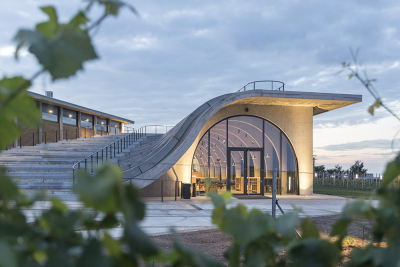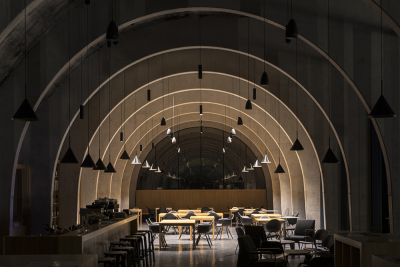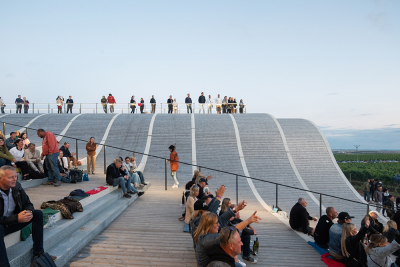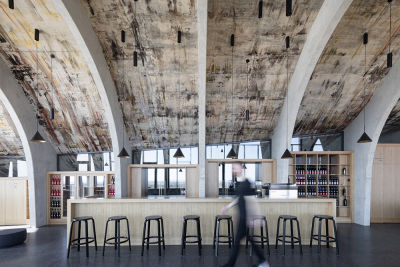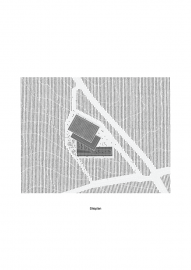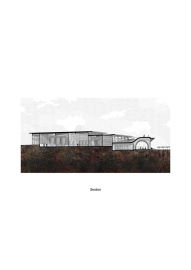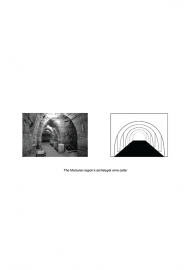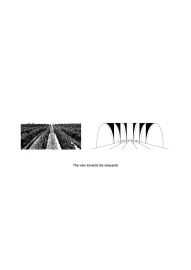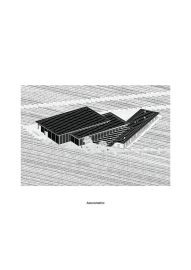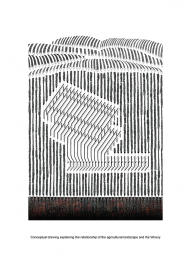Lahofer Winery
Nestled in the Moravian countryside, the design of the Lahofer Winery brings together a longstanding wine tradition and contemporary wine-making processes. Housing a visitor center, tasting room and production facilities, the structure immerses itself in the landscape, achieving a subtle symbiosis with the surrounding vines.
The Lahofer Winery fuses the region’s longstanding wine tradition with a contemporary design in constant dialogue with the surrounding vines. Reflective of modern wine-making processes, the building brings together three distinct interconnected structures – a wine-making facility, the winery’s administrative base, and a visitor center and adjoining tasting room. Emulating archetypal wine cellars of the region, the vault of the winery rests on a grid of arched beams. Acting as a mirror of this shape, an undulant roof serves as an amphitheater for cultural events open to both locals and visitors, merging the winery into the ground – and the culture – on which it rests.
The project finds its roots in the legacy of the Lahofer Winery – one grounded in a storied cultural heritage and a profound respect for the natural environment. Responding to Moravia’s topography and architectural tradition, rooted in the culture of wine, we conceive a design in symbiosis with the region’s landscape. Reminiscent of the region’s characteristic arched wine cellars, a colonnade of vaulted beams frames the interior space into its storied curve. On its exterior side, draping the winery, an undulant roof acts as an inclined open-air amphitheater and cultural venue. Towered by the concave roof of the amphitheater, the space unfolds into a vast cellar, embracing the design of archetypal Czech wineries defined by the exposed rib construction of the arches. Each reinforced concrete arch is individually designed to fit a specific angle of the ceiling, while the distance between the arches is determined by that between the vine rows. Each module rises from a vine row and runs through the space, achieving perfect visual symmetry and guiding the viewer’s gaze across the grapevines.
Informed by the ambient nature, the visitor center invites visitors to fully experience its produce in the barrique cellar, made of wood, concrete and glass, and adjoining tasting room. A large-scale mural painting by Czech contemporary artist Patrik Hábl covers the entire ceiling area. Its tampered, irregular and sparse strokes, ranging from earthy reds and blacks to terroir-reminiscent browns and beiges, echo the variations of the soil and its weightlessness as it seemingly lifts from the ground, leaving its timeless markings on the walls. The materials were Inspired from the character of the site and through a dialogue with our client who already had a relationship with the land. The colors of the terroir, for example are reflected in the art piece decorating the ceiling in the main tasting area.

